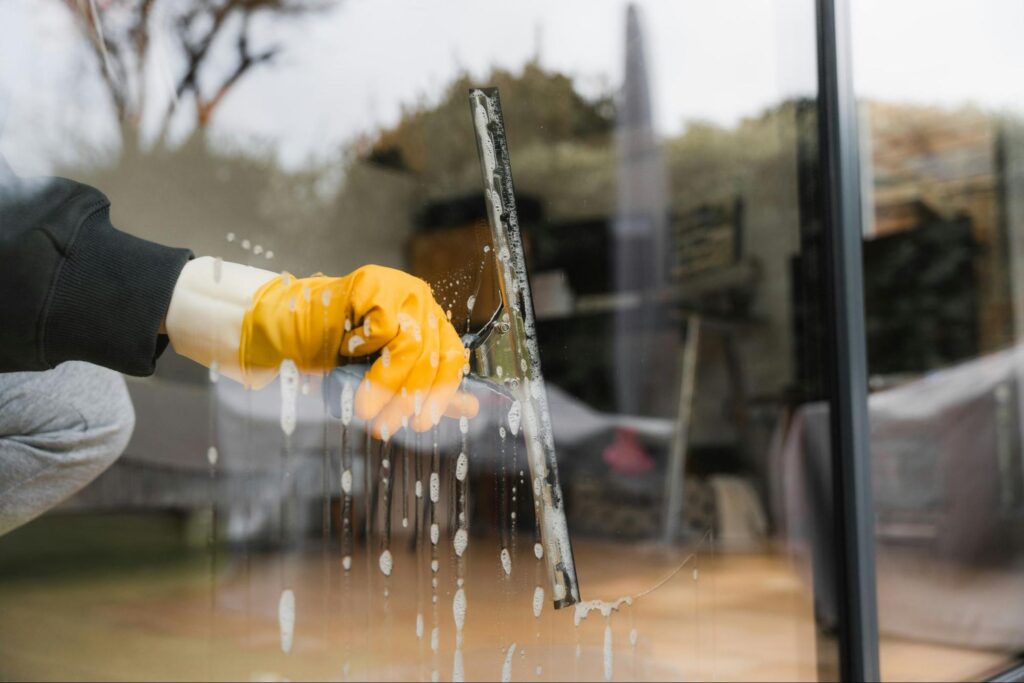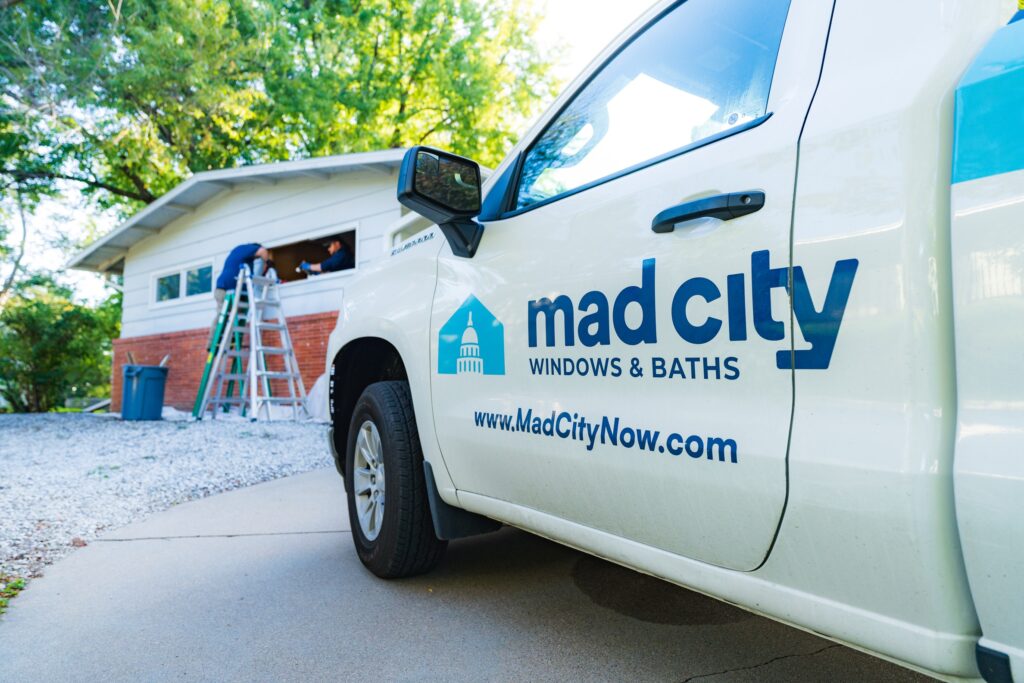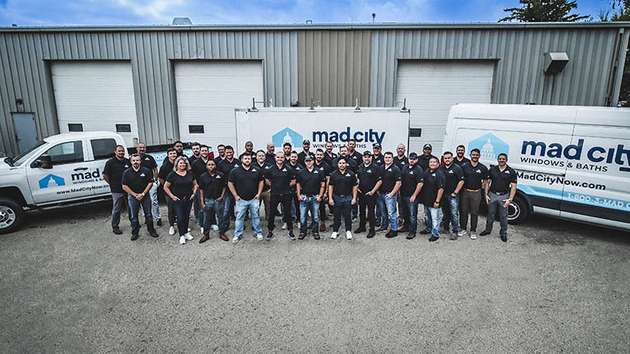
Dirty, smudged windows can make even the cleanest home look dull, blocking natural light. But with the right techniques, you can get sparkling, streak-free windows with little hassle. In this guide, we’ll cover window cleaning tips for both inside and outside so you can work smarter, not harder.
Tools and Materials Needed for Window Cleaning
The right window cleaning tools will make the job easier and help you avoid streaks, drips, and going over the same spot again and again. Here are some must-haves:
- Microfiber cloths or lint-free rags
- Squeegee
- Bucket
- Cleaning solution (store-bought or DIY)
- Soft-bristled brush or sponge
- Extension pole
- Rubber gloves
- Old towels or drop cloths for the floors
- A dry eraser for stubborn water spots
Preparation Steps
A little groundwork ensures your cleaning is efficient, effective, and mess-free. Here’s everything you need to know to set yourself up for success:
Safety Precautions
With window cleaning, you may find yourself in dangerous situations without realizing it. Here are some steps you should take before you start to ensure your safety:
- Use a sturdy step stool or ladder (no, not the rolling chair) to reach high windows.
- Check your surroundings for wet surfaces and surprising steps.
- Ventilate your rooms, especially if you’re using commercial cleaners, to keep the fumes from building up.
- Be mindful of electrical outlets so you don’t get water in.
Removing Curtains and Blinds
Curtains, drapes, and blinds collect dust and grime. They’ll need cleaning, too, or you may find your windows dirty immediately after cleaning.
Take down curtains and drapes and wash them according to the materials. Then, dust the blinds with a microfiber cloth or duster. Wipe down the curtain rods to prevent dirt from falling onto your freshly cleaned windows later.
Dusting and Vacuuming Window Areas
The next step is to deal with all that hidden dust around the tracks, window frames, and sills. Start with this step so you don’t end up smearing dirt around when you clean the windows:
- Run a dry microfiber cloth over your frames and sills for light dust, but use a damp cloth with mild soap if there’s built-up dirt and grime.
- Vacuum the track to collect dirt, dead bugs, and whatever else sneaks in before wiping them down.

How to Clean Interior Windows
Cleaning interior windows takes a specific approach so you avoid smudges, streaks, and lint-covered glass. Here are some things you should consider:
Step-by-Step Cleaning Process
Follow these simple steps for a flawless finish for cleaning interior windows:
- Lay down an old towel or drop cloth to catch drips.
- Grab a microfiber cloth or duster and wipe down the window frames and sills.
- Pick your cleaner.
- Lightly mist the window — don’t soak it. Too much cleaner leads to streaks.
- Use a microfiber cloth or a lint-free towel to wipe the cleaner away in circular motions.
Common Mistakes to Avoid
When cleaning interior windows, there are several common mistakes to avoid. Skipping the dusting step can leave streaks and debris behind, while using too much cleaner can create a sticky residue. Wiping in random directions may lead to uneven cleaning, and using the wrong cloth can result in lint or scratches. Finally, not drying the windows properly can cause unsightly streaks and water spots.
How to Clean Exterior Windows
Cleaning exterior windows is much different because they are exposed to rain, wind, dust, pollen, and other outdoor debris. With the right approach, you can get streak-free windows without breaking your back.
Challenges Cleaning Exterior Windows
Here are some of the challenges you can expect:
- Hard-to-reach spots: If your home has multiple floors, you’ll need a ladder or extension pole to reach higher windows. Make sure whatever you use is stable.
- Built-up grime: Outdoor windows often get hit with everything from rain to bird droppings, so you’ll need more scrubbing power.
- Weather conditions: Cleaning exterior windows on windy days may be dangerous if you’re using a ladder. Plus, dust and debris may blow right back onto the glass.
- Tough stains: Minerals from rainwater, tree sap, and pollen can leave a residue that regular cleaners won’t budge.

Best Practices for Cleaning Outdoor Windows
Here’s how to clean windows from the outside:
- Start with a rinse with the garden hose to loosen up the dirt.
- Use a window cleaning solution of water, vinegar, and dish soap.
- Work from top to bottom — gravity will bring the dirty water down, making you do the work again.
- Use a long-handled sponge or brush so you don’t have to climb a ladder for every window.
- Rinse again after scrubbing, washing away any remaining soap or dirt.
Dealing with Stubborn Stains and Debris
If you find dirt baked onto the glass by the sun or left behind by hard water, here’s how to handle this issue:
- Hard water stains: These white spots may show up from minerals in rain or sprinkler water. Use a paste mixing baking soda and water to scrub them away, or you can try a specialized hard water remover.
- Tree sap: Rubbing alcohol or a little acetone-like nail polish remover on a cotton pad can break it down. Just be sure to wipe the area clean afterward.
- Bird droppings: Soak the spot with warm, soapy water for a few minutes before scrubbing. Avoid scraping dry droppings, as they can scratch the glass.
Maintaining Window Frames and Sills
Glass cleaning is only half the job — window frames and sills collect dirt from condensation, weather exposure, and indoor air circulation. Frequently cleaning this area helps keep your home looking polished and prevent bigger issues like mold, drafts, or water damage.
Cleaning Different Frame Materials
Using the wrong cleaner could lead to damage, discoloration, or even warping of the different types of window frames. Here’s how to wash the most common materials:
- Vinyl frames: Use warm water and mild dish soap for regular cleaning. For tougher dirt, use a soft brush and a vinegar-water solution. Avoid abrasive scrubbers that can leave behind scratches.
- Wood frames: Use a damp microfiber cloth with a mild soap, then immediately wipe away excess water with a dry cloth to prevent damage.
- Aluminum frames: Combine water and mild detergent as a cleaning solution. You’ll want to avoid harsh chemicals, which can corrode and oxidize the metal over time.
- Fiberglass frames: Low-maintenance and weather-resistant, you can clean fiberglass frames with a simple soap and water solution.
Preventing Mold and Mildew
Mold and mildew love growing in window sills and frames where condensation collects. Here’s how to keep them at bay:
- Improve ventilation by opening your windows regularly to let air circulate.
- Wipe away condensation every morning so the moisture doesn’t sit too long.
- If mold starts to form, use a solution with equal parts white vinegar and water on the area. Let it sit for 10 minutes before wiping it away.
- Persistent moisture or drafts may mean it’s time to replace or repair weatherstripping.
Regular Maintenance Tips
Consistent maintenance will help you avoid big cleaning jobs or even serious issues. Here are some regular chores you should do to keep things clean:
- Dust window sills weekly.
- Check weather stripping every few months.
- Clean tracks and hinges weekly.
- Rinse outdoor frames after storms.
- Repaint or reseal wooden frames if they’re cracking or peeling.

DIY vs. Professional Window Cleaning
Should you grab your squeegee or call the professionals? Let’s break down the details.
Pros and Cons of DIY Cleaning
DIY window cleaning can be rewarding, but it’s not always the easiest (or most effective) option. Here’s what you should consider before cleaning the windows yourself:
Pros of DIY Window Cleaning 
- Saves money.
- You have complete control over products and cleaning methods.
- Immediate results without having to wait for an appointment.
- The satisfaction of cleaning with your own hands.
Cons of DIY Cleaning 
- Time consuming.
- Some windows may be too hard to reach.
- You don’t have the specialized tools professionals do that give you a streak-free finish.
When to Hire Professional Cleaners
Sometimes, cleaning windows isn’t just inconvenient — it’s downright impossible. You should consider hiring professional window cleaners if your windows are hard to reach, haven’t been cleaned in ages, or have stubborn stains that won’t come off. It’s also a good idea if you have many windows to clean or if you’re preparing for a special occasion and want everything to look spotless.

Additional Tips for Sparkling Windows
Minor tweaks in your cleaning approach can make a huge difference. Here are some professional-level strategies to get your windows sparkling:
Avoiding Cleaning on Sunny Days
Surprisingly, bright, sunny days aren’t the best for washing windows. The sun speeds up drying time too much, evaporating the soapy water almost instantly, leaving behind streaks before you can grab your squeegee.
Instead, aim for an overcast day or early morning when the sun isn’t glaring down. If you can’t avoid the sun altogether, start on the shaded side of your house and work your way around.
How to Prevent Streaks
Technique and tools are the two main factors that can help you get professional streak-free windows. Here are a few things to keep in mind:
- Use microfiber cloths or a squeegee instead of regular cloths or paper towels.
- Wipe inside windows in one direction (like left to right) and outside windows in another (up and down). If you spot a streak, you’ll know which side it’s on.
- Use a fine mist of cleaner instead of soaking the window panes.
- Use distilled water in your cleaning solution, especially if you have hard water from the tap, to avoid mineral streaks.
- After squeegeeing, buff the window with a clean microfiber towel to get rid of any lingering marks.
Seasonal Window Maintenance
If you’re only cleaning your windows once a year, you’re making things way harder on yourself. Instead, consider seasonal upkeep to keep them in great shape all year round.
- Spring: Pollen and rain can leave a sticky mess on glass, so give your windows a deep clean after the worst of allergy season has passed. Also, check your window screens for damage before summer hits.
- Summer: Dust and bugs collect on window sills and tracks, but a quick wipe-down every few weeks can keep buildup under control.
- Fall: Falling leaves and unpredictable weather mean more dirt.
- Winter: Grime from condensation buildup, indoor dust from heating systems, and fireplace residue can leave your windows dirty. If possible, clean the inside windows mid-season. For exterior windows, focus on preventing ice buildup around the frames by keeping them dry and free of excess moisture.

Conclusion
With these tips, you’ll achieve streak-free glass, clear views, and a home that feels brighter. Simply choose the right weather, perfect your technique, and stay consistent with seasonal maintenance to keep those panes looking spotless with little effort.
If no amount of scrubbing brings your windows back to life, it may be time for an upgrade. At Mad City Windows, we rely on top-notch products and factory-certified installers to provide lasting results. Contact our expert team for a free estimate and find out how new windows can transform your home.

Frequently Asked Questions
How often should I clean my windows?
Ideally, you should clean windows inside and out every three to six months. If you live near a busy road, have frequent storms, or deal with lots of pollen, you should clean them more often.
What is the best way to clean window screens?
Remove the screens, rinse them with a hose, and scrub gently with a soft brush using warm water and dish soap. Let them air dry completely before reinstalling.
What are the most common mistakes in window cleaning?
Cleaning in direct sunlight, using paper towels that leave lint, and over-spraying cleaner are big mistakes. Skipping a final buff with a dry microfiber cloth can also leave streaks.
What tools do professionals use to clean windows?
Professionals rely on high-quality squeegees, microfiber cloths, and streak-free cleaning solutions. For exterior windows, they often use water-fed pole systems with purified water to prevent mineral deposits.
Are there eco-friendly alternatives to window cleaning products?
Yes, eco-friendly window cleaning is easy with a homemade cleaning solution of white vinegar and distilled water. For stubborn grime, a sprinkle of baking soda before spraying works wonders.







